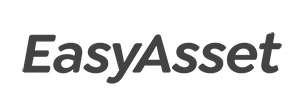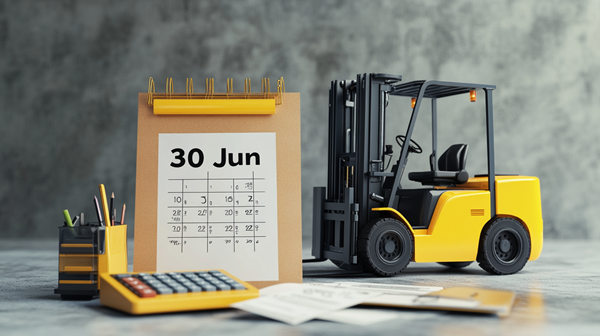Confused about instant asset write-offs? Discover how Australian businesses can claim up to $20,000 per asset, finance smarter, and stay ATO-compliant—before the deadline hits.
Key takeaways
- Instant asset write-off threshold: The instant asset write-off threshold is $20,000 for eligible small businesses.
- Eligibility: Your business must have an aggregated turnover under $10 million to access the $20,000 instant asset write-off.
- Deadline alert: This $20,000 write-off limit applies to assets first used or installed in the relevant financial year.
- Used equipment included: You can claim used assets as long as they meet eligibility and cost conditions.
- Financing allowed: Loans, chattel mortgages and hire purchases are all valid methods to acquire equipment and still claim the write-off.
- GST matters: The write-off is calculated excluding GST if you’re registered for GST.
- ATO compliance: The asset must be ready for use in your business, not just ordered or financed.
Introduction: Why this matters now
The instant asset write-off has long been a go-to tax incentive for Australian small businesses looking to reduce taxable income while upgrading equipment. However, with changes to the scheme over time, many businesses are unsure what can still be claimed—and how equipment finance fits into the picture.
In this guide, you’ll get clear, practical answers on how the current instant asset write-off works, how it interacts with financing options like chattel mortgages or leases, and what you need to watch out for when planning purchases.
Understanding the instant asset write-off
What’s changed?
The temporary full expensing measure (allowing claims of assets with no cost limit) ended previously. The current scheme is:
- The $20,000 instant asset write-off applies per asset.
- This is only available to small businesses with turnover under $10 million.
What kinds of assets are eligible?
To qualify, the asset must:
- Cost less than $20,000 (excluding GST)
- Be used or installed and ready for use within the applicable financial year
- Be used primarily for business purposes
This includes:
- Machinery and industrial tools
- Computers, POS systems and IT equipment
- Office furniture
- Medical and diagnostic devices
- Trade vehicles (if under the threshold)
What about second-hand items?
Used assets are eligible as long as they meet the criteria. This makes equipment auctions and used machinery dealers more appealing for budget-conscious buyers.
Using equipment finance and still claiming the write-off
One common question is whether you can still access the write-off if the asset is financed instead of paid in full. The good news is: yes, you can.
Accepted financing methods include:
- Chattel mortgage – You take ownership from the start; perfect for claiming depreciation or the write-off.
- Hire purchase – Treated similarly to a chattel mortgage for tax purposes.
- Business loan – As long as you own the asset and it meets criteria.
Note: Operating leases and rental agreements do not qualify, as the asset isn’t owned by your business.
Key tax rules when using finance:
- The asset must be installed and ready to use in the financial year you’re claiming.
- You can’t just sign a finance agreement—the asset must be delivered and functional.
GST implications for the instant asset write-off
When calculating the cost of the asset for the $20,000 limit:
- GST-registered businesses: Use the net GST-exclusive price
- Non-GST registered businesses: Use the gross GST-inclusive price
Example:
- If an item costs $22,000 including GST:
- It’s eligible if you’re registered for GST (because $20,000 ex-GST)
- It’s ineligible if you’re not registered for GST (because $22,000 inc-GST)
BAS reporting and ATO compliance
Instant asset write-off and your BAS
- The GST on the purchase can be claimed in your BAS for the quarter it’s acquired.
- The deduction is claimed in your annual tax return, not through your BAS.
Make sure you’re ATO-compliant
To stay compliant:
- Retain detailed invoices and finance contracts
- Ensure the asset is used for business purposes
- Keep a record of first use or installation date
ATO scrutiny is higher in years with popular tax incentives, so documentation matters.
Planning your equipment purchases strategically
When is the best time to buy?
- Before EOFY: Buying before the end of financial year ensures you can claim in that year.
- Cash flow considerations: Equipment finance can help you spread the cost but still claim the full deduction upfront.
Tips for maximising value:
- Bundle assets below $20,000 to maximise deduction across multiple items
- Look for used or ex-demo equipment that meets the cost threshold
- Use finance to preserve cash flow while still reducing your tax bill
How to time equipment purchases around tax deadlines
To claim the instant asset write-off, your equipment must be installed and ready for use by 30 June. Simply signing a contract or placing an order won’t qualify.
Here’s how to avoid last-minute issues:
Plan for the 30 June deadline
Your asset needs to be on-site, set up and operational before the financial year ends. Orders that arrive or are installed after 30 June may not be eligible.
Allow time for finance approval
Finance applications typically take 2–10 business days to approve and settle. Apply at least 3–4 weeks in advance to ensure your equipment is delivered and usable in time.
Account for delivery and installation delays
Shipping delays, installation bookings or backordered stock can all derail your claim. Choose in-stock equipment where possible and lock in install dates early.
Example: Buying a $19,800 forklift on 28 June won’t count if it’s not delivered and operational by 30 June.
FAQs
Can I claim the write-off on an asset I ordered but haven’t received?
No. The asset must be installed and ready for use in your business before the end of the financial year.
Do I still get the write-off if I buy second-hand equipment?
Yes—as long as it meets the other eligibility rules.
What’s the difference between temporary full expensing and instant asset write-off?
Temporary full expensing (now ended) had no cost limit. The instant asset write-off is capped at $20,000 per asset.
Can I claim the write-off and also claim GST on the same item?
Yes. GST is claimed via your BAS; the write-off is claimed in your income tax return.
Do I need to pay off the finance first to claim the deduction?
No. Ownership and use are the key requirements—not full payment.
Conclusion: Make tax time work for your business
The $20,000 instant asset write-off gives small businesses in Australia a valuable way to reduce tax while investing in productivity. With careful planning—and the right equipment finance—you can upgrade assets, preserve working capital, and stay compliant.
Just remember to act before the end of the financial year, keep accurate records, and ensure your assets are up and running. If in doubt, always consult your accountant or finance broker to tailor the right approach for your business.


